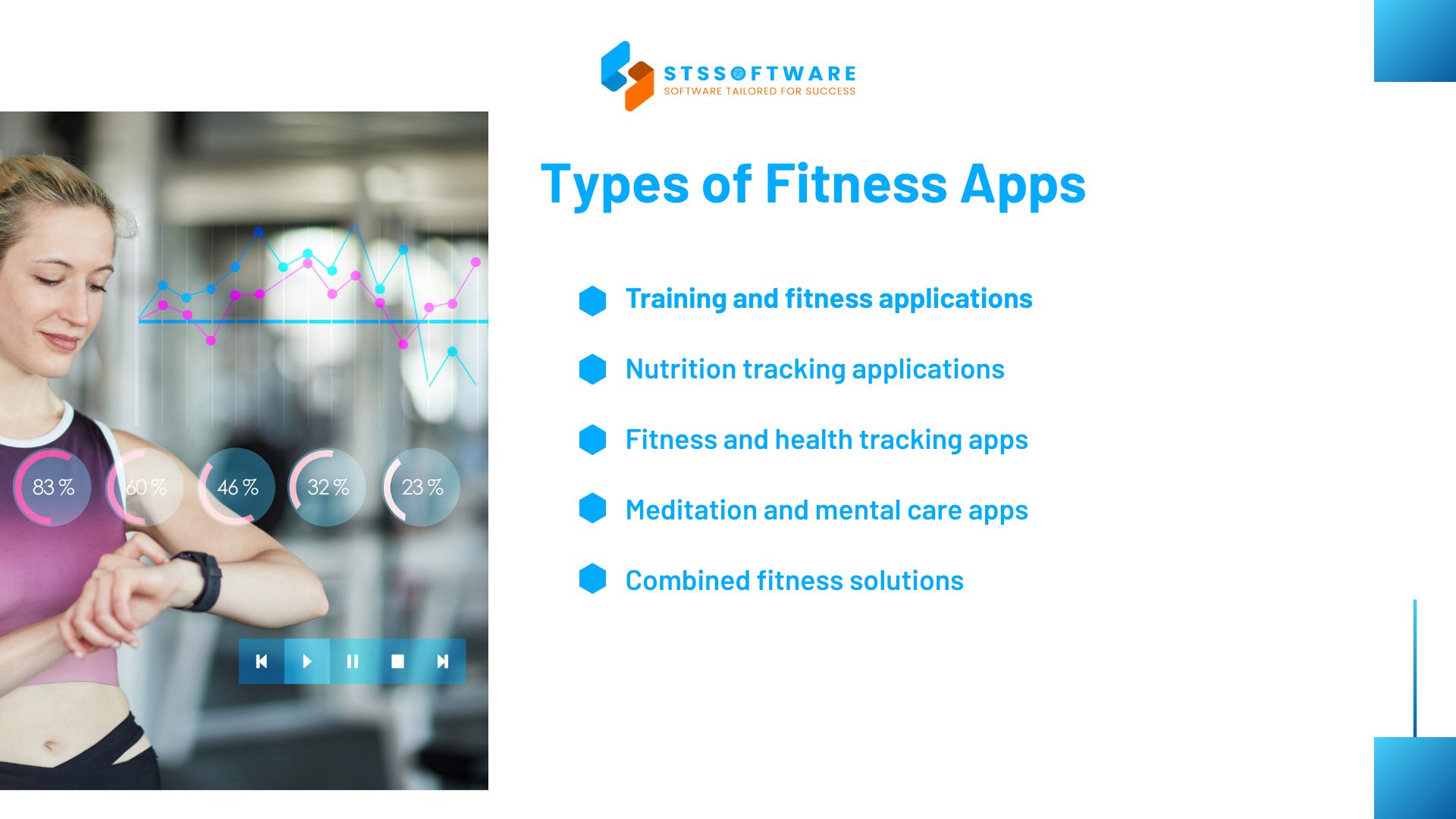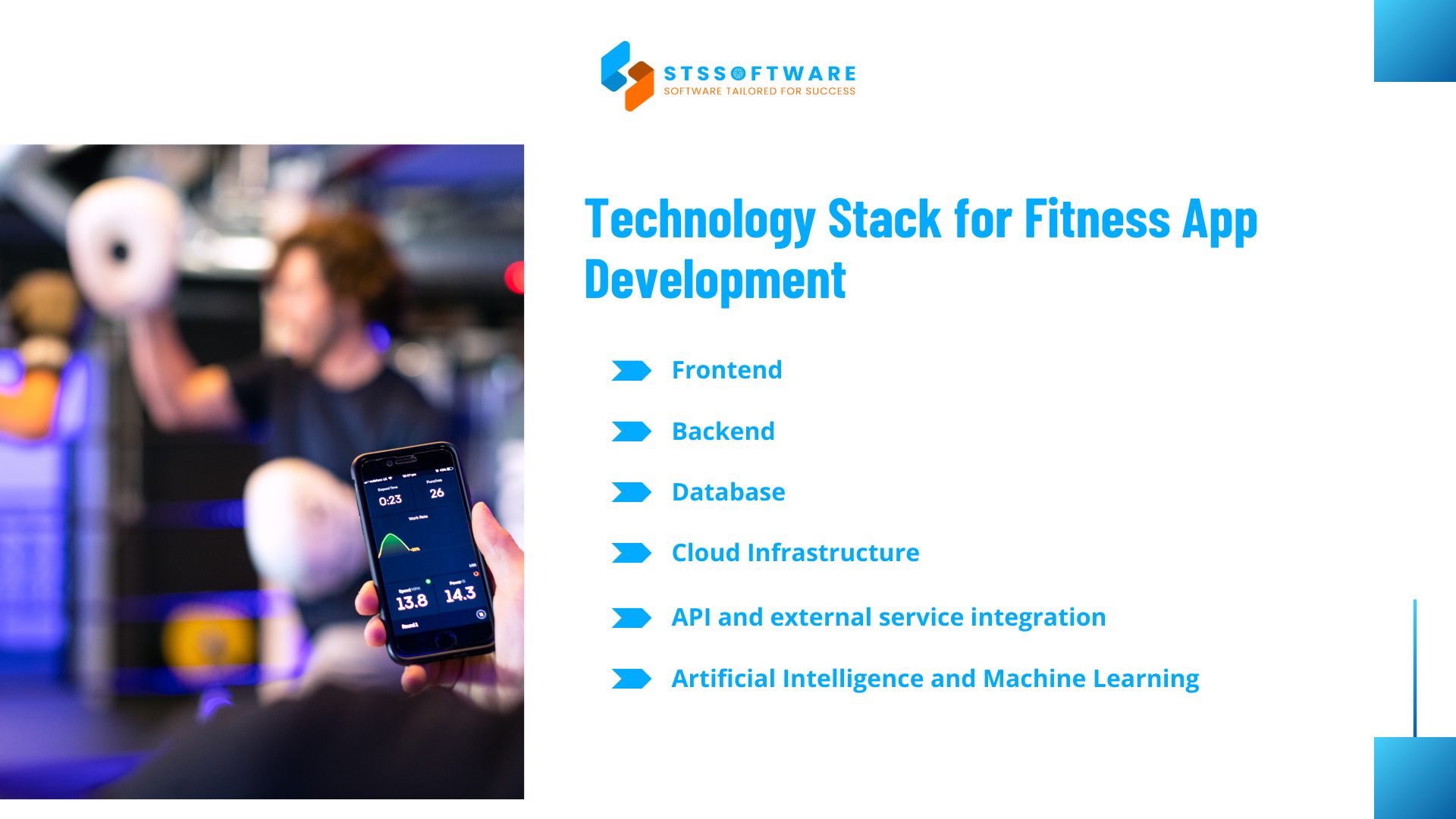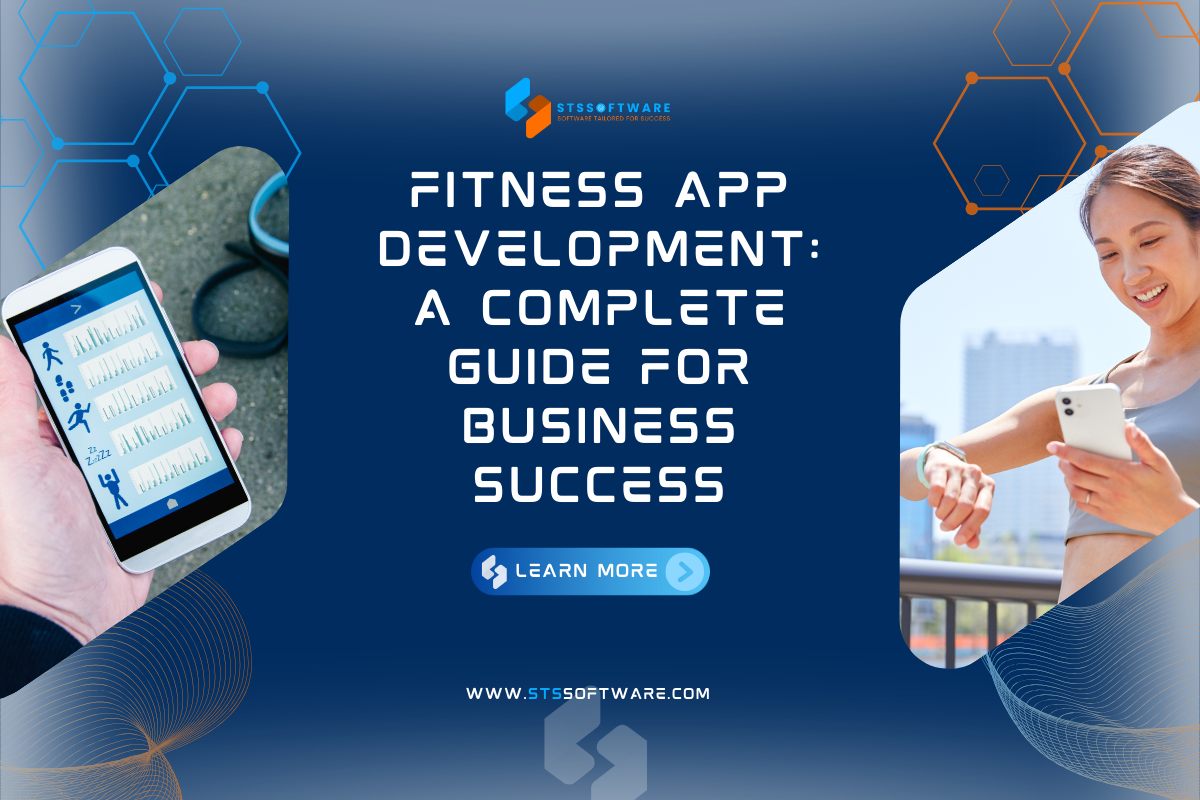Fitness app development is now a clear trend in healthcare. Users care more about training, monitoring health, and customizing their workouts. From simple step counting apps to complex AI-integrated platforms, health and fitness app development not only serves the needs of training, but also opens up great opportunities for businesses in the medical technology field. Recent stats show rapid growth in the global fitness app market. More opportunities are expected in the next decade. A report by 360iResearch suggests that this market will value at 30.14% from 2024 to 2030. In contrast, a different study by Grand View Research estimated CAGR for the fitness app market between 2025 and 2030 ranges from 13.88% to 29.95%.
This article will provide a comprehensive look at the evolution of fitness apps, from core technologies to challenges and opportunities in implementation. At the same time, we will also analyze real world applications in each segment and why businesses should partner with experienced units like STS Software in projects related to health care and fitness.
Types of Fitness Apps 
In recent years, the demand for health training and physical improvement of users has increased, leading to the explosion of the fitness application development market. Each type of application meets a separate need – from training, scientific eating to mental care. Below are the most popular application groups:
Training and fitness applications
Apps in this group often come with instructional videos, personalized exercises and goal-based routes. Users can exercise at home or the gym without a personal trainer. Some prominent names such as Nike Training Club or Freeletics have made their mark with millions of downloads.
Nutrition tracking applications
Recording daily food portions, calculating calories and tracking nutritional indexes has become much simpler thanks to applications such as MyFitnessPal – currently with more than 200 million users worldwide.
Fitness and health tracking apps
These apps connect with wearables. They help track steps, distance, sleep, and heart rate. This is an important part of the fitness tracker app development segment, with big brands like Fitbit or Garmin continuously leading the market.
Meditation and mental care apps
Not only physical health, mental health is also increasingly focused on. Apps like Headspace or Calm provide meditation experiences, breathing exercises, and sounds to help you sleep well. Calm once achieved a revenue of over 100 million USD/year, proving the growing interest in mental health (Business of Apps).
Combined fitness solutions
This is a suitable choice for users who want to integrate many utilities into a single platform – from exercise instructions, diet menus, to tracking the training process. These hybrid apps not only save time but also create a more seamless and personalized experience.
There is no denying that fitness application development, and especially fitness tracker app development, is opening up huge opportunities in the health tech industry. As consumers become more focused on living a healthy lifestyle and taking control of their health, businesses that have comprehensive and easy-to-use apps will have a clear competitive advantage.
Essential Features for Modern Fitness Apps
The fitness apps must combine training, health tracking, and community. This ensures long-term user engagement. With respect to health and fitness app development services, ensuring a great user experience and scalability would matter in making this app competitive in the market. Below are the essential features you need to follow:
User profile and personalization of the experience
The app needs to allow users to enter personal information such as weight, height, health goals and exercise preferences to provide appropriate suggestions. The more likely a user is to stick with an app, the deeper the level of personalization.
Activity tracking ability
Connecting to sensors on the phone or wearable devices such as Apple Watch, Fitbit, Garmin helps to automatically record steps, calories burned or heart rate. This requires the ability to synchronize data smoothly and stably – a vital factor in the field of fitness mobile app development.
Workout planning and scheduling
Allow users to create or choose a suitable workout schedule, and track daily progress. Apps like Fitbod or Strong often integrate exercise suggestions based on body condition and training history.
Progress tracking and analysis
Visualizing data through charts and statistics helps users see the results after each stage, thereby maintaining motivation. Apps with effective tracking features have a 23% higher user retention rate (Statista)
Community and social features
Creating an environment for users to share achievements, participate in group challenges or simply encourage each other will increase commitment. Strava is a successful example, with more than 120 million global users regularly participating in virtual events or regional running groups (Strava).
Nutrition tracking and meal planning
In addition to workouts, many apps also offer meal logging, macro calculations, and menu suggestions. Integrating a rich food database is a big plus for diet-conscious users.
Integration with smart wearables
A modern fitness app needs to work smoothly with a variety of devices and operating systems. This is a significant technical challenge, requiring the development team to optimize compatibility, data accuracy, and battery life of wearables.
Gamification elements
Adding badges, rewards, leaderboards, or weekly challenges increases the fun experience and keeps users engaged longer. According to a report from App Annie, fitness apps with gamification elements have a 40% higher daily app open rate than traditional apps.
These features not only define a complete app but also reflect the capabilities of the fitness app development services provider. As the fitness mobile app development market becomes increasingly competitive, building a well-rounded app – easy to use, feature-rich, and well-integrated – is the key to attracting and retaining users for the long term.
Step-by-Step Fitness App Development Process
To develop a successful fitness app, you not only need a good idea but also a clear implementation process, from initial research to official launch on the market. Below are the basic steps that any fitness app development project should follow to ensure long-term effectiveness.
Market research and competitor analysis
Before development, businesses must study users and trends. They also need to analyze rival apps carefully. For example, MyFitnessPal stands out thanks to its extensive food and nutrition records.
Identify the target user
An application serving amateur runners will be very different from an application for professional gym goers. Building a detailed persona – such as “Minh, 30 years old, office worker, wants to lose weight and increase endurance” – will help the design and development team come up with features that are most in demand.
Set clear business goals
Depending on the direction, the app can focus on attracting users, revenue from paid packages, or a personal trainer brand. For example, Chris Hemsworth’s Centr app is successful because of its clear goal. It combines workouts, diet tracking, and mindfulness in a paid subscription model.
Design the UX and UI
This is an extremely important step because the interface is the first point of contact with the user. The app should be simple, fast, visually appealing, and easy to navigate. For apps that work on smart watches, streamlining the interface to suit small screens is something to pay special attention to.
Technical planning and application architecture
This phase defines the entire application structure: functional modules, database, workflow, integration complexity. For apps with many users at the same time like Freeletics, the expertise needs to design the backend architecture to be easily scalable and handle thousands of requests simultaneously.
Decide between native or cross-platform development approaches
Building separate apps for iOS and Android (native) helps optimize performance, but costs more. On the contrary, platforms like Flutter or React Native help save time, especially suitable for small projects or MVPs. Depending on the budget and expectations, businesses will choose the appropriate direction.
Backend development and database design
The backend system needs to be powerful enough to store, process and synchronize data on training, nutrition, wearables, etc. For example, an application with a food portions analysis feature will require a rich database that quick retrieval.
API integration and external system connection
To increase utility, apps often integrate APIs from devices such as Apple Health, Fitbit, Google Fit or payment gateways such as Stripe, Paypal. Ensuring compatibility and security in this integration is an indispensable step in the fitness app development process.
Comprehensive testing
The app needs to be thoroughly tested on a variety of devices, network conditions, resolutions and operating systems. Testing should cover speed, safety, design, functionality, and real user experience. An app that crashes the first time it is used will be easily deleted immediately.
Deployment and launch planning
After testing is complete, the app will be uploaded to the App Store and Google Play. This is accompanied by a launch strategy: running ads, collaborating with fitness influencers, offering trial offers, etc. A typical example is the app “8fit”. This app once offered 14 days for free to attract the first 10 million users.
Technology Stack for Fitness App Development

When it concerns the development of fitness apps, technology choice defines application performance, scalability, and end-user experience. The following shows a brief description of core technical elements which are commonly used in fitness apps.
Frontend
Depending on the target platform, language such as Swift, Kotlin or Java is used for maximum performance. On the other hand, if a business wants to cut costs and launch time, the solution could be to adopt cross-platform technology like React Native or Flutter. Gym Workout Tracker uses Flutter. It passed 1 million downloads for its smooth UI and dual-platform support.
Backend
This part refers to technologies supporting the business logic and data manipulation. In this regard, the technologies mostly preferred include Node.js, Python, Ruby On Rails, or Java. Many applications that leverage high concurrency such as Strava. It’s a globally popular fitness community platform-use Node.js to take advantage of its asynchronous processing.
Database
With the user data, exercise history, and nutrition information having to be accounted for, there ought to be a strong database management system in place. Depending on the data type and scalability need, popular choices include PostgreSQL, MySQL, or MongoDB. The truth is that Fitbit and many other applications use a combination of both for easy and fast data handling.
Cloud Infrastructure
For secure scalable flexibility, AWS (Amazon Web Services), Google Cloud, or Microsoft Azure are top consideration platforms. These systems support huge data storage, automatic backups, and real-time data analysis. The Freeletics app is an example that utilizes Google Cloud to scale and serve millions of users across several countries.
API and external service integration
It is seen that integration has become a very vital aspect of app development related to fitness in terms of health tracking devices like Apple HealthKit, Google Fit, or other wearables like Fitbit, Garmin. Apart from these, there are other features like payment gateways which are extensively used to enhance usability. The MyFitnessPal app is a typical example when it seamlessly connects with dozens of wearable devices and external platforms to easily synchronize data.
Artificial Intelligence and Machine Learning
More applications are applying AI and Machine Learning to provide personalized training experiences. Features such as exercise suggestions, progress assessment, or virtual coaching are becoming more popular. A real-life example is the Freeletics app – using AI to design a separate training path for each user based on their goals and actual capabilities.
Monetization Strategies for Fitness Apps
Along with user experience and functionalities, a sustainable monetization model is vital in long term maintenance and growth of the fitness mobile app. Here are some popular methodologies that many successful fitness applications are applying:
Freemium model
It is the model where a freemium base is offered to the entire population and after that, the advanced features are unlocked through the paid plan. 7 Minute Workout is an example. Although short daily workouts are for free access, to use it with personalized coaching or advanced exercise sets requires payment. This model would attract many associated with free service with the eventual realignment of a significant number into paying customers.
Subscription service
The most popular model nowadays is to charge an amount for every month or an annual subscription to unlock access to all premium content and features. Apps like Centr by Chris Hemsworth and Fitbod provide plans on personal workouts, high-quality instructional videos, and detailed nutrition programs using this model. The end-user-subscription unlocks the application completely and removes the client from being limited by ads or locked content.
In-app purchases
Many apps choose to sell individual content or features instead of asking users to pay for the entire package. For example, there are some different special workout packages with titles like “30 Day Belly Fat Burner” or “Yoga for Beginners” priced at $1-5 each. MyFitnessPal is a perfect example of a combination of the freemium model with a sales mechanism through individual nutrition and exercise packages.
Integrating advertising
One way to earn from the app is by showing ads in the free version.. Although easy to implement and generate revenue immediately, this format needs careful management to avoid compromising the user experience. For example, Daily Workouts Fitness Trainer inserts ads between workouts or after program, but still allows users to upgrade to an ad-free version if they wish.
Partnerships and Sponsored Content
A more creative approach is to partner with sports brands, gyms, or experts to create branded workout programs. The Nike Training Club app has collaborated with famous athletes to launch branded workouts, attracting a large user base while still creating commercial value for the partner.
Premium Content and Features
Some apps choose to “hide” in-depth features, advanced exercises, or professional trainer support behind a paywall. Users who want access must pay separately or upgrade their subscription. Kayla Itsines, for example, has SWEAT, free download app, although her entire training program falls under a monthly premium plan.
As those will differ, every app will combine all of them for revenue optimization, depending on their business goals or target audience.
Challenges in Fitness App Development and Solutions
Fitness app development not only requires creativity in features and interfaces, but also comes with many technical and strategic challenges. Here are some common challenges and how businesses can approach them effectively:
Maintain user engagement and retention
One of the biggest challenges in fitness app development is how to keep users from giving up halfway. Many people download an app but stop using it after a few weeks. To solve this, today’s apps often incorporate personalized workout journeys, gamification element, and interactive community building. For example, Strava has been very successful in turning running or cycling into a social activity, thereby maintaining regular usage.
Health data privacy and security issues
Fitness apps also demand an enormous number of personal information about health, so data safety becomes a top priority. Developers should be able to adhere to robust regulations. We can mention GDPR in Europe or the new laws born in the US, such as California’s CPRA. In addition, it is necessary to devise an encryption scheme, protect logins with OTP or biometrics, and update clear privacy policies. For example, the MyFitnessPal app had user information leaked in 2018, making developers today more cautious about handling data.
Difficulty in integrating with wearables
Smoothly connecting with devices such as Apple Watch, Fitbit, or Garmin is not simple. Each device uses different APIs and platforms, leading to difficulties in data synchronization. The app should also be optimized to save battery on the wearable device. Popular solutions today are to use official SDKs from manufacturers, test the synchronization technique many times, and ensure regular updates to be compatible with new operating system versions.
Optimize application performance
An ideal fitness application should not take up too many system resources, while still ensuring fast response, smooth operation, and not consuming too much data. To achieve this, it is necessary to optimize the code, use caching effectively, and limit unnecessary background activities. Tools such as Firebase Performance Monitoring or Android Profiler help monitor and fine-tune performance in real time.
Application scalability
As the application grows and attracts tens of thousands, even millions of users, the backend system must be powerful enough to handle large data without disrupting the service. Building a microservices-oriented architecture and leveraging cloud platforms like AWS or Google Cloud helps scale flexibly according to actual usage needs.
Compliance with health data regulations
Although most fitness apps are not directly subject to strict health regulations like HIPAA, new laws related to consumer data – like Washington’s My Health My Data Act – can still affect them. Therefore, developers need to consult with legal counsel from the beginning and proactively adjust the data storage and processing system to ensure legality.
Every difficulty in the journey of developing a fitness app comes with an opportunity to improve quality and differentiate in the market. If you are looking for a partner with deep experience in fitness app development, STS Software is ready to accompany you from strategy to comprehensive implementation.
Cost to Develop a Fitness App
Estimating the cost of a fitness app development project is not simply a matter of hours or lines of code – it is a process that depends on many key factors.
Factors that affect development costs
The complexity of the features is one of the factors that determine the cost. An app that only supports step and heart rate tracking will have a very different budget than an app that integrates diet tracking, video workouts, wearable connectivity, and advanced data analytics.
In addition, the choice of platform (iOS, Android, or both), the interface, the backend system, and API integration (Apple HealthKit, Google Fit, Stripe, etc.) also have a strong impact on the total cost. Finally, the geographic location and expertise of the development team are factors that cannot be ignored. For example, hiring a development team in North America will be much more expensive than in Eastern Europe or Vietnam.
Cost Analysis by Stage
The fitness mobile app development process is usually divided into the following main steps:
- Planning & discovery: Including market research, defining core features – this stage accounts for about 5–10% of the budget.
- UX/UI design: A good interface will help retain users for a long time. The cost at this stage depends on the detail and level of customization of the design.
- Frontend & backend programming: This is the most expensive part, accounting for 40–60% of the total cost.
- Testing & deployment: Ensuring the application operates stably, smoothly and securely – usually accounts for about 15–20% of the development budget.
Cost Differences by Geographic Area
Different ways of hiring service at different geography will have different development price tags. For example, that same application can cost anywhere between 100,000 and 150,000 USD in America. While in Vietnam or India, a budget of a mere one-third without compromising on quality. This is exactly why many startups and big businesses are looking for partners from cost-effective markets but with good technical capabilities.
Budget optimization strategy
One of the budget optimization strategies is not to create a feature-full app from the very beginning; rather start with the MVP version-the most critical functionalities-first. Another saves time and cost when developing a cross-platform application through Flutter or React Native. In addition, working with a company that possesses experiences in fitness apps will save you many unprofitable tips and risks.
ROI and Time to Launch
It is not just the investment cost, but also ROI and time of launch that are calculated. If strategy is right, the net will not take long to generate revenue through subscriptions, train packages. An application of this type usually takes anywhere between 4 to 8 months to be developed, depending on size and complexity of the project.
To sum up, an app development cost for fitness can result from many causes. Careful planning, choosing a reputable development partner, and making the right technology decisions will help businesses optimize costs while still achieving the expected product quality.
Why Choose STS Software as Your Partner for Fitness App Development
In the competitive health and fitness application market, choosing a reputable healthcare software development partner is a key factor into a successful product. STS Software is confident that it is a reliable fitness app development company with a team of experienced engineers and a professional development process.
In-depth technical skills in the field of fitness – health
STS Software has a solid technical foundation in developing applications related to physical fitness and health care. The team here is proficient in integrating popular APIs or health monitoring platforms through wearable devices smoothly and accurately.
Success is proven through many real projects
During its operation, STS Software has participated in developing fitness app development. Some of our projects include a step tracking app, a calorie counter, a personal workout schedule management system, and a nutrition menu building support platform. We received many positive reviews from our partners thanks to our ability to execute effectively and on target.
Full service from A to Z
Not only stopping at programming, STS Software accompanies you from the ideation stage, user interface design, system architecture planning. In addition, STS also programs frontend/backend, performs quality testing, deploys to App Store, Google Play, and provides operational support. This is one of the factors that makes STS a trusted partner for many startups and businesses.
User-centric
An effective fitness app is one that understands the user. STS pays special attention to the user experience by designing an easy to use, eye catching interface. Every feature, from workout planning to progress tracking, is built around real-world user behavior and habits.
Flexible and scalable solutions
We understand that a good application must be able to adapt and grow in the future. STS designed the solutions with a scalable architecture, ready to serve hundreds of thousands of users at the same time while still ensuring stable performance.
Security is a top priority
With the nature related to sensitive personal data, STS Software is committed to implementing the necessary security measures. We regularly update new regulations such as GDPR, apply strict encryption standards and security testing throughout the development process.
Clear and transparent development process
One of the outstanding strengths of STS is its transparent, customer-centric working method. Each step in this process is closely coordinated with the business side to ensure that the final application reflects the expectations set from the beginning.
Highly appreciated by customers and has a position in the industry
STS Software is proud to receive many positive feedbacks from domestic and foreign businesses. Some products developed by STS have been nominated or honored in technology and UX/UI design awards. This partly reflects the company’s strong position in the fitness app development company market.
Conclusion
In this article, we have explored the important aspects of fitness app development. The fitness application not only plays a crucial role in improving health, but also turned into a very thriving market with potential for a lot of business.
In its future, fitness app development will definitely see several new trends. Especially, the robust inclusion of artificial intelligence into developing personalized training, creating more popularized virtual fitness experiences-improving wearables to track health accurately.
If you are contemplating developing a fitness app, then you should not hesitate to reach STS Software. We are ready to support you from idea to implementation, bringing a quality and optimal product to your users.
Contact us now to start your fitness app development journey with STS Software!



